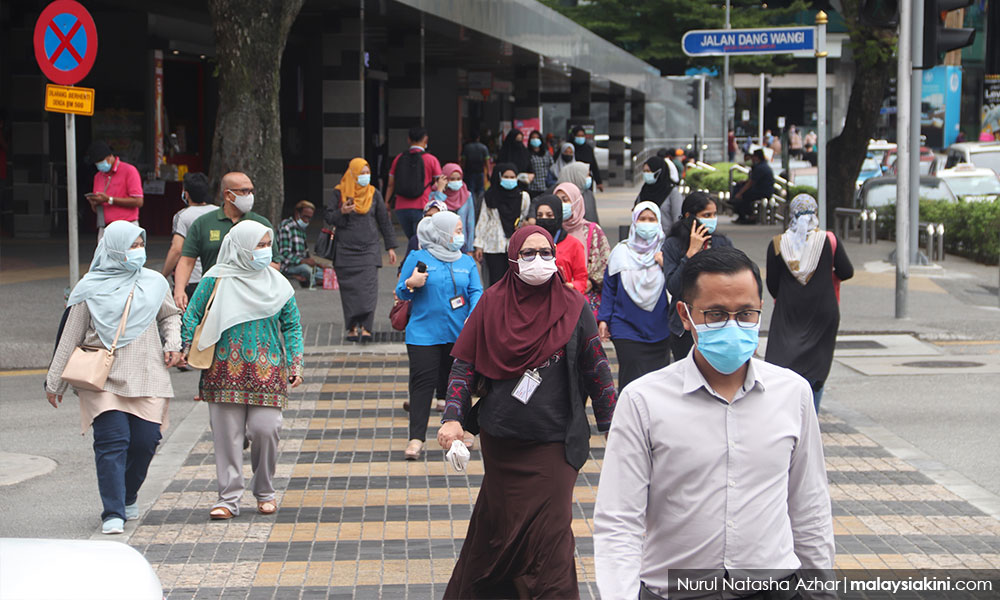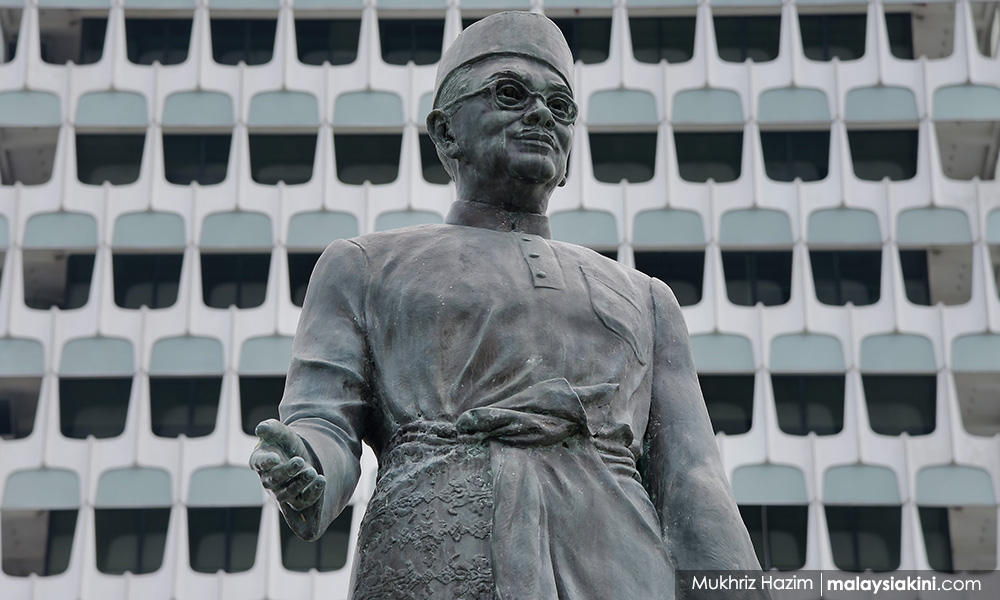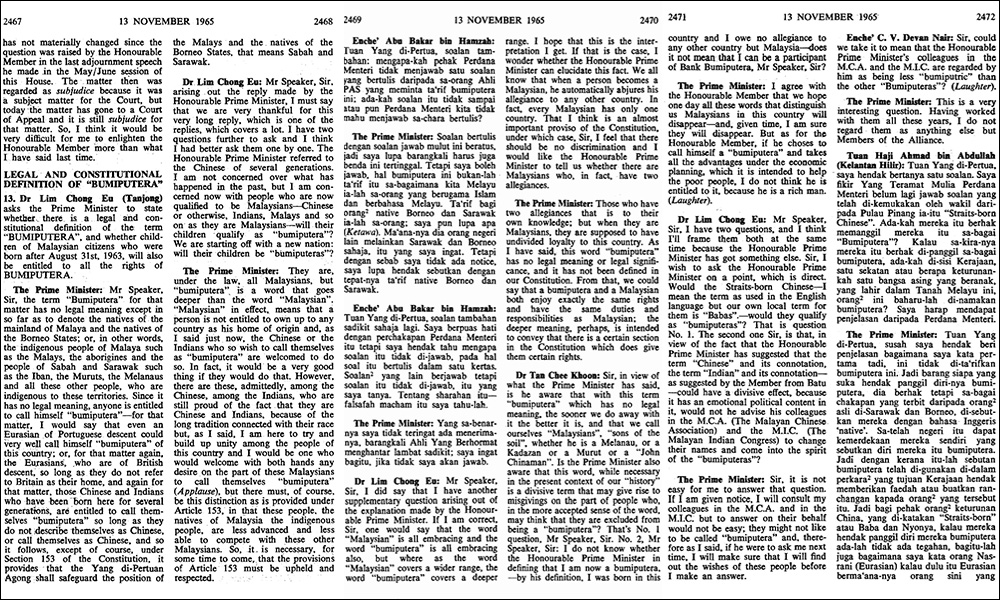One of the most enduring socio-economic and racial issues in Malaysia is that related to the bumiputera and non-bumiputera term and the dichotomy, compartmentalisation and polarity that has resulted since the term was introduced into the nation’s political lexicon and life.
In this article, I will shine a light on what many observers see as the biggest elephant in the nation’s shaky edifice of national solidarity and unity. In it and a subsequent piece, I will examine the origins of the bumiputera term; discuss how it has evolved as a political and policy construct, and review its role and significance in national policy-making and implementation.
Should this political and policy construct that defines and regulates the lives of the majority of Malaysians in many ways continue? What is its relevance more than half a century after its formulation? What are alternative and better constructs that can address more effectively the challenges that we face in nation-building?
These questions and similar musings and introspection have dominated private conversations for a long time. But they have until now been repressed or suppressed. Today, they are emerging more forcefully in the open space of social media.
These discussions on the bumiputera/non-bumiputera divide and dichotomy, for the most part, are severely handicapped by a lacuna in research and studies on how the term “bumiputera” has emerged to assume its centre stage in the nation’s life.
So far as we can make out, no official declaration or account exists to explain the genesis of the term, and why and how it needs to be maintained as the key driving force in national policy-making.
It is hoped that this incursion into the when, who, how and why of the bumiputera/non-bumiputera issue can generate an open discourse that can help our leaders and civil society in the rebooting exercise to move the nation out of the race and identity cul-de-sac that we are trapped in.

Origins of bumiputeraism
It is necessary to note that the term “bumiputera” is of relatively recent coinage. Examination of the key constitutional and official documentation leading to the nation’s independence and the establishment of Malaysia in 1963 has found no mention of the term.
Neither the Reid Commission nor the Cobbold Commission proceedings and voluminous documentation use the term or refer to the need to differentiate between bumiputera and non-bumiputera in establishing the status and rights of the individuals and communities.
What was found instead are the references to the special position of the Malays in Peninsular Malaya and natives of any of the states of Sabah and Sarawak and the legitimate interests of other communities in accordance with the provisions of Article 153.
Further, Article 160 defines a Malay as being one who "professes the religion of Islam, habitually speaks the Malay language, conforms to Malay customs and is the child of at least one parent who was born within the Federation of Malaysia before the independence of Malaya on Aug 31, 1957, or the issue (off-spring) of such a person".
The first official use of the term can be traced to the first Bumiputera Economic Congress held in June 1965. Following it, the term first appeared in Parliament when the “Majlis Amanah Ra'ayat” (Mara) Bill was tabled in August 1965 to replace the Rural and Industrial Development Authority (Rida, 1953) as proposed by the said congress.
The next occasion when the term was raised was in Parliament in the same year. This following account is excerpted from the proceedings:
“Dr Lim Chong Eu (Tanjong) asks the prime minister to state whether there is a legal and constitutional definition of the term ‘bumiputera’, and whether children of Malaysian citizens who were born after Aug 31, 1963, will also be entitled to all the rights of bumiputera.

“The Prime Minister: [Tunku Abdul Rahman] Mr Speaker, Sir, the term ‘bumiputera’ for that matter has no legal meaning except in so far as to denote the natives of the mainland of Malaya and the natives of the Borneo states; or, in other words, the indigenous people of Malaya such as the Malays, the aborigines and the people of Sabah and Sarawak such as the Iban, the Muruts, the Melanaus and all these other people, who are indigenous to these territories.
“Since it has no legal meaning, anyone is entitled to call himself ‘bumiputera’ for that matter. I would say that even a Eurasian of Portuguese descent could very well call himself ‘bumiputera’ of this country; or, for that matter again, the Eurasians, who are of British descent; so long as they do not refer to Britain as their home, and again for that matter, those Chinese and Indians who have been born here for several generations, are entitled to call themselves ‘bumiputera’ so long as they do not describe themselves as Chinese, or call themselves as Chinese, and so it follows, except of course, under Section 153 of the Constitution, it provides that the Yang di-Pertuan Agong shall safeguard the position of the Malays and the natives of the Borneo states, that means Sabah and Sarawak.”
[Refer to the Hansard, Nov 13, 1965; columns 2567-2476 for the full debate]

Equally important during that period, a motion by a PAS MP on Aug 11, 1965, “to amend the Constitution to guarantee the rights of the bumiputera in the fields of politics, economy, education and culture” was debated at length but rejected by the government. A full reproduction of this and earlier debates would be useful to share with our present generation of parliamentarians and other political leaders.
On Oct 23, 1978, Hussein Onn in reply to a parliamentary question on whether Muslim non-Malays were included as bumiputera under the NEP, categorically excluded the said group based on the interpretation of Articles 160(2) and 161A (6)(7) of the Federal Constitution.
This appears to have been an attempt to give the term a legal meaning for purposes of the policy. It is not clear whether this ruling is still the legal position with regard to the inclusion of Muslim non-Malays in the bumiputera category and other communities such as the Orang Asli, Portuguese Eurasian, Siamese Malaysians, Chitty and Baba-Nyonya.
The stark contrast between the official responses in 1965 and 1978 shows how the term has evolved as a political construct from the pre-New Economic Policy (NEP) to the NEP period.
It is also important to note that the Census 1970 classification of ethnic/race groups did not use this categorisation. It was only in later years that the term “bumiputera” entered into use in official documents almost by stealth.
Another key point is that the term was initially applied to the Peninsular Malays for the most part whilst the native groups of Sabah and Sarawak were referred to separately. Also, in the first decade of the NEP, the phrase “orang-orang Melayu dan bumiputera yang lain” was used in the Malaysia Plan documents.
Since then, the political construct of bumiputera and non-bumiputera has not been reviewed by Parliament or any other official body despite the numerous concerns expressed by many of the nation’s stakeholders.
The failure to review the term is all the more surprising since the NEP ended in 1990. With the ending of the NEP, one would have expected that the bumiputera classification and its resultant influence and impact on policy would have been refined or made to revert to the earlier constitutional provision to ensure progress towards a non-ethnic or at least less-ethnic oriented road map. Why this did not take place awaits explanation and examination.
A de facto policy construct
In tracing the genesis of the political and policy construct, it has not been possible to find any clear justification for its formulation.
One explanation is that it emerged as a strategy to ensure that the Malay share of NEP benefits would be more substantial and justifiable than if the category of Malays alone was applied in the nation’s policy initiatives.
Critics of the dichotomy have noted that the broader bumiputera classification has been instrumental in providing the basis for Malay advancement and dominance in whichever sector of the economy and society that it is applied to.
At the time of the initiation of the NEP in 1970, the Malay share of the country’s population stood at 46.5 percent. With the newly formulated term, the bumiputera share of population increased to 56 percent. In 1991, the bumiputera share of the population had increased to 62 percent.
This larger numerical contrivance has since been legitimised to provide a crucial and new reference point for measuring and assessing any and all aspects of life in the country.
It is not only in the share of income, equity, licensing and other economic sectors that the bumiputera/non-bumiputera classification and dichotomy have become the de facto and de jure determinant and measure of policymaking.
Its unquestioned and unchallenged extension and application to other aspects of socio-cultural and political development and life including in such diverse fields as education, the electoral system, urbanisation, national expenditure, etc. makes it the most important construct in Malaysia to put under the microscope in any serious conversation on national development and unity.
LIM TECK GHEE is author of ‘Challenging Malaysia’s Status Quo’. - Mkini
The views expressed here are those of the author/contributor and do not necessarily represent the views of MMKtT.




No comments:
Post a Comment
Note: Only a member of this blog may post a comment.